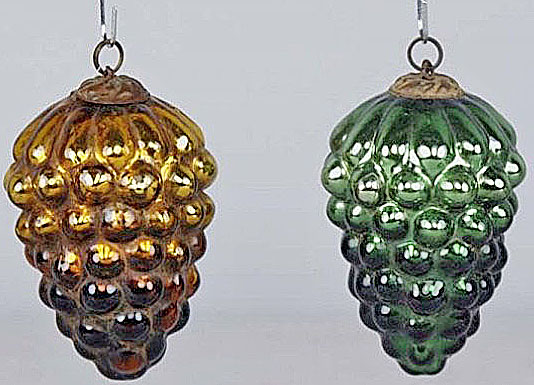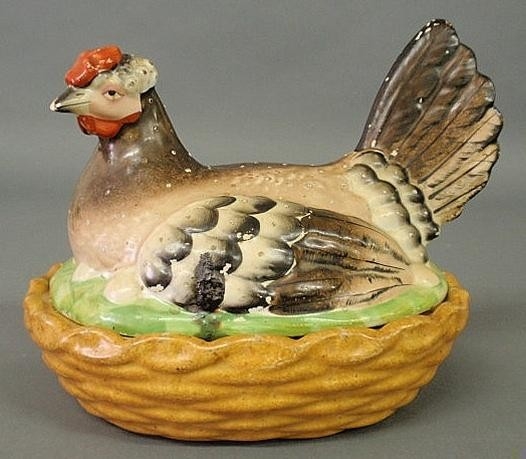When most people hear the word kugel, they think of the Jewish pudding, but kugel is actually a German word for a ball or a sphere, which is how kugel also came to be the word for early German glass Christmas ornaments. Christmas kugels appeared around 1840 and probably made great inroads in England and America thanks to Queen Victoria, who made the German version of Christmas that she was raised with fashionable after she took the throne. Kugels weren’t originally intended to hang on Christmas trees. Most likely, they were “end of day” pieces made by glass blowers who were simply trying to blow the largest glass bubble possible. (Many different media forms have “end of day” work – small unique objects made from leftover materials at the end of the day, often as little trinkets or gifts, they’re highly sought after by collectors today who consider them folk art.) These large glass kugels often hung in doorways and windows rather than on Christmas trees.
When they did make the jump to Christmas ornaments, originally, they were just the very simple glass balls that we think of as traditional Christmas decorations today, but by the 1880s, they were beginning to appear in a variety of forms: grape clusters (like the ones pictured above), teardrops, pinecones, etc. Molten glass was blown into a mold and then broken off at the neck. The jagged edge of the neck was smoothed down so a little metal cap with a hook could be applied – the same design we see today.
Because of their ephemeral nature and because they were handled so frequently, early Christmas kugels didn’t survive in great numbers, so they’re very collectible today. The challenge is accurately assessing their age. And German glass ornaments were a staple of Christmas decorations until well into the 20th century, so if you’re looking for something more than the basic globe, you’ll not be disappointed. You’ll find clowns, dogs, Indians, Santas and even beetles! So take a close look when you’re unpacking those ornaments that have been passed down through your family – you might find some real surprises on your tree as well as under it!
-Hollie Davis, Senior Editor, p4A.com
To search the Prices4Antiques antiques reference database for valuation information on hundreds of thousands of antiques and fine art visit our homepage www.prices4antiques.com.









